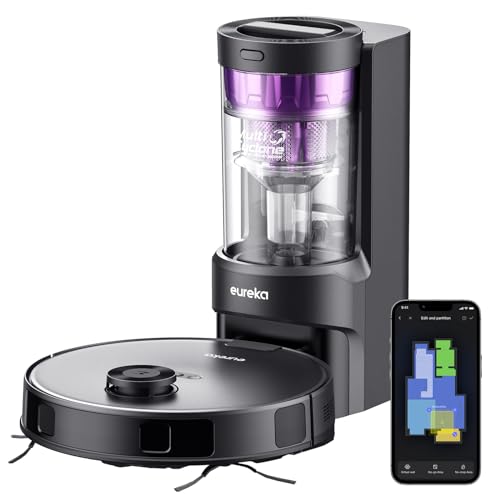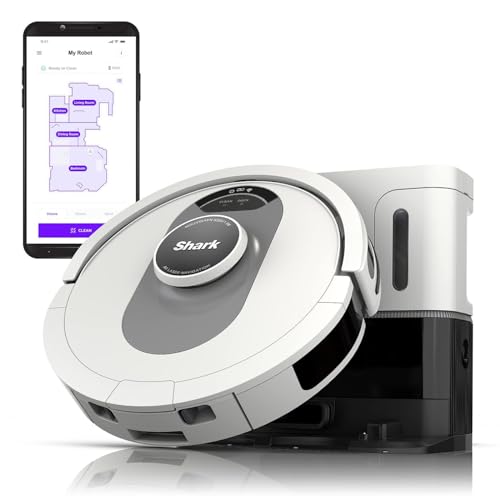See What Bagless Autonomous Vacuums Tricks The Celebs Are Utilizing
페이지 정보
작성자Etta 댓글댓글 0건 조회조회 99회 작성일 24-08-26 16:44본문
 bagless programmed cleaners Autonomous Vacuums
bagless programmed cleaners Autonomous VacuumsRobotic vacuums take care of lint, surface dirt, pet hair, and more, keeping your floors clear so you can concentrate on the things that matter most to you. They can also charge and dock via remote control or on a timer.
The choice between bagged and non-bagged models depends on your priorities as well as your lifestyle and budget. This guide will help you determine which option is better for your home.
Easy to empty
Bagless autonomous vacuums do not require any bags and are much easier to empty than traditional vacuum cleaners. They are also less noisy and require less maintenance than traditional vacuum cleaners with noisy filters. Some models include dustbins that can be easily cleaned and taken away. Some robots come with an water tank that can be used to clean floors and absorb the most stubborn stains. These robots are more versatile since they can empty their water tanks after every cleaning cycle or if the tanks are full.
Most robotic cleaners have an enormous charging station that can be set on the floor of your home so you can take care of other tasks while it is working. Some can self emptying robot vacuum bagless-empty, which means they can dump debris from their dustbin into a container outside when they return to the dock to recharge. This is an enormous advantage over other robot vacuums that have to be emptied manually after each use.
In addition to removing debris, bagless autonomous vacuums also aid in keeping your home healthy by sucking up dirt, pet hair, lint, and other allergens regularly on schedule. They can reach areas that aren't accessible to conventional vacuum cleaners, and can fit under furniture where dirt bunnies can hide.
In terms of function in terms of functionality, robot vacuums are an excellent addition to any household. They're especially useful in cleaning floors that aren't clean and can remove the crumbs and dust that accumulate on hard surfaces. Most of them have a removable and washable filter which is usually HEPA, which is ideal for those with breathing or allergies.
However, if you've got wall-to-wall carpeting or a home packed with furniture, a robotic vacuum might not be the best option for your space. A traditional vacuum is an ideal choice as it is more powerful and can take care of ground-in dirt that's been lying in the air for a longer period of time. You can also use a robotic vacuum along with an ordinary one. This way, you can use the robotic vacuum to tackle the toughest messes and the regular one to tackle the normal stuff.
Cleans easier
A bagless robot vacuum can be more efficient than a bagged one, as it does not require the lengthy process of removing dust clumps from its dust bin. This can be messy and also release dust into the air, which could trigger allergy symptoms. Self-emptying models do not require users to touch the dirt, since it automatically empty itself into a bin. It only requires that the base be changed out every 60 days or at least every 60 days or.
Bagless models also tend to be quieter than bagged counterparts, so they are less disruptive to the family. Some vacuums have a hush setting that reduces the amount of noise they create during the process of vacuuming. They can also be remotely controlled through an app or voice assistants like Amazon Alexa or Google Assistant, allowing users to plan cleaning sessions and alter settings while on the move.
Many robotic vacuums can be upgraded to include additional features, such as HEPA filters and mopping capabilities. These upgrades can boost the vacuum's performance and increase the cleaning capabilities of the vacuum. Some of them can be used to make a voice and video call or as a camera for surveillance.
When you are choosing a robotic vacuum, choose one with a large dust bin and a long battery life. The best models will also include an charging station that allows you to pause your vacuuming session, recharge it and then resume where you started. If you have pets, look for an option that uses rubber brushes instead of bristle-style brushes, which can minimize pet hair and lint hair tangles.
Choose a model that features an intelligent mapping function to ensure thorough cleaning. The machine will map out the areas it has cleaned and will follow that route every time, unless there is an obstruction. This will prevent the vacuum cleaner from diverting from its planned route and taking up time, which could occur with less expensive vacuum cleaners, such as our budget pick.
Easy to maintain
Bagless autonomous vacuums require less maintenance than their bagged counterparts because the process for emptying the debris bin is simple. You simply unlatch the bin and empty it into a trash can and then reattach it to the unit. This eliminates an unnecessary interruption during the cleaning process and lets you keep working without stopping. This reduces the amount of bags that you have to purchase over time.
A bagless vacuum cleaner has the advantage of not stopping once the debris bin is full, as a bagged model does. This means that you can continue working and achieving more clean without needing to empty the bin.
Furthermore, many robots that have bags that are not able to be emptied have self-emptying capabilities that allow them to return to their base and dump their contents into the garbage. This is an important benefit for facilities managers who have to reduce the amount of manual work their employees have to do.
The top robotic vacuums that remove pet hair are equipped with advanced navigation systems and obstacle detection systems, which help the vacuums to avoid obstacles, such as small animals or children. Many models have lasers and cameras that map the space and use that information to determine the best way to complete each cleaning. This will result in consistent, thorough cleaning and help you comply with standards for safety and health in your facility.
Robotic vacuums aren't the ideal solution for cluttered or heavily soiled areas, but they can make an excellent supplement to your cleaning routine. It is still possible to use a handheld or canister vacuum for difficult-to-reach places and for cleaning upholstery, drapes as well as drawers, closets, and kitchen cabinets. You should also remove plush shag-pile rugs because robot vacuums could be stuck in them.
It's a good idea inspect your robot vacuum frequently for dirt, clogged filters dust and other particles that could cause unpleasant smells and reduce the performance of the machine. It is also recommended to clean the wheels of your robotic vacuum to make sure they're not soiled, clogged with hair or threads. Clean wheels are more efficient and prevent the robot from sliding and damaging your floors.
Repairing is much easier
Unlike bagged vacuums, bagless self-emptying robot vacuum robotic vacuums don't require any bags. They have a large dust bin with an airtight seal that is easy to empty or replace. This allows for the machine to run more efficiently, and decreases the amount dirt that is released into the air when vacuuming. bagless self-cleaning robots robots tend to last longer than their bagged counterparts because there is less wear on the motor and the nozzle.
Another advantage of bagless autonomous vacuums is that they are usually less expensive to run than their bagged counterparts. Bagged vacuums require bags that need to be replaced which can add up to a significant cost over time. The majority of vacuums with bags have an washable filter that can last for years. This is more affordable and green than purchasing new bags.
Robotic vacuums employ different sensors to navigate, map, and clean their surroundings. High-end models like the Roborock S8 Pro Ultra use LiDAR and 3D mapping technologies for excellent navigation. These sensors enable the robot to navigate through difficult environments, with no human assistance.
These systems are reliable, but they are not foolproof. They could make a mistake and think that certain objects are stairs or come across obstacles they are unable to avoid. Some systems have a "teach" feature which allows users to program the robot to follow a specific cleaning path on every use. This feature can be very beneficial for facility managers who need to verify that a specific area has been cleaned.
However the technology is being developed. Many robot vacuums aren't capable of finding hair of pets. If your dog pees on the floor and the robot vacuum bagless is unable to detect it you could end having a "poo-pocalypse" all over your home. Some systems can solve this problem by using LIDAR and 3D mapping technology and smart camera for object recognition. These cameras can be an excellent complement to other navigational and mapping technology to aid robots in determining the best paths for cleaning.

댓글목록
등록된 댓글이 없습니다.

